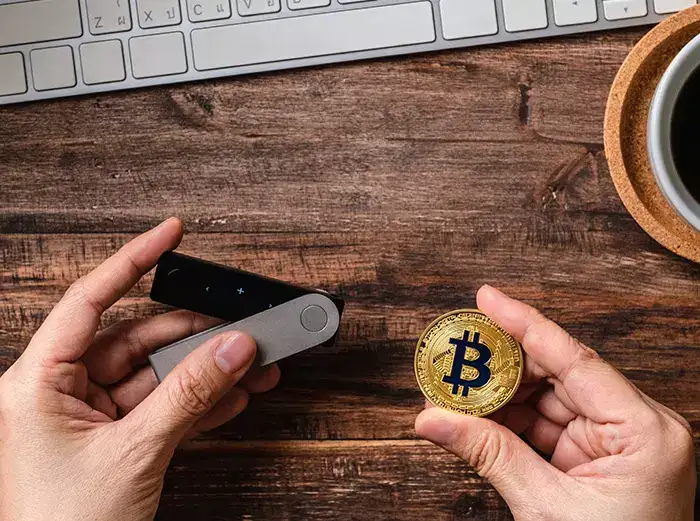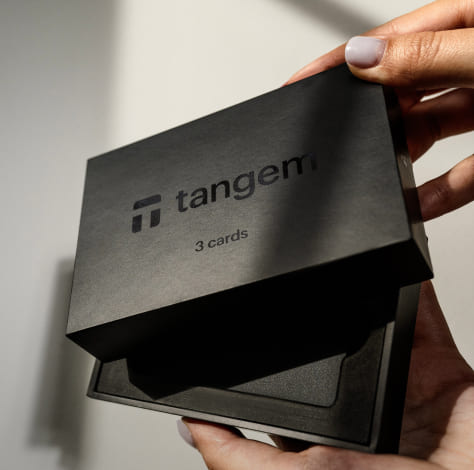
Just securing your cryptocurrency is not enough; implementing Multi-Factor Authentication (MFA) for cold wallets enhances protection against unauthorized access. These wallets, often considered offline fortresses, can still be vulnerable without layered security strategies. By combining multiple verification methods, users can significantly reduce the risk of losing assets to theft. This post explores effective MFA techniques and how they fortify your cold wallet, ensuring your digital investments remain safe and secure.
Importance of Multi-Factor Authentication
Your digital assets are increasingly targeted by cyber threats, making the application of multi-factor authentication (MFA) a necessity. Implementing MFA establishes an additional layer of defense, ensuring that even if one security measure is compromised, unauthorized access remains mitigated. This approach is vital for protecting sensitive information and maintaining user trust in platforms associated with cryptocurrency and other digital investments.
Your understanding of security protocols should extend beyond basic password protection. Multi-factor authentication requires multiple forms of verification, which typically include something you know (like a password), something you have (such as a smartphone or hardware token), and something you are (biometric verification). This layered approach significantly reduces the likelihood of unauthorized access to cold wallets.
Definition and Overview
The essence of multi-factor authentication lies in its capacity to enhance security through various verification methods. It is not sufficient to rely solely on passwords, as they can easily be compromised through phishing or brute force attacks. By requiring multiple forms of identity verification, MFA adds an necessary layer of protection against potential breaches.
Benefits for Cold Wallets
Definition highlights that the use of multi-factor authentication for cold wallets provides enhanced security against unauthorized access. Cold wallets, which store cryptocurrencies offline, are particularly appealing targets for hackers. With MFA, the inherent risk of having private keys or recovery phrases exposed is mitigated, ensuring that your assets remain secure even in transit or during infrequent access.
Indeed, the integration of multi-factor authentication with cold wallets significantly elevates the protection of digital assets. By preventing unauthorized access through enhanced security measures, users can safeguard their investments against potential theft or malicious attacks. This not only enhances the security posture of individual wallets but also contributes to a safer environment within the broader cryptocurrency ecosystem.
Types of Multi-Factor Authentication
Now, various types of multi-factor authentication (MFA) can enhance security for cold wallets. Each method contributes to a layered security approach, making unauthorized access significantly more challenging. Key types of MFA include:
| Knowledge-based Factors | Information known to the user, such as passwords and security questions. |
| Possession-based Factors | Items that the user possesses, like security tokens or mobile devices. |
| Biometric Factors | Unique biological traits such as fingerprints or facial recognition. |
| Time-based Factors | Authentication that changes over time, like time-based OTPs. |
| Location-based Factors | Authentication influenced by the user’s geographic location. |
Thou should consider the unique benefits each type can offer when implementing multi-factor authentication for optimal security.
Knowledge-based Factors
Knowledge-based authentication refers to information that only users possess, such as passwords and security questions. This method is widely adopted due to its simplicity and low cost. However, it poses risks if users choose weak passwords or if the answers to security questions can be easily guessed or found online. Essential elements of knowledge-based authentication include:
- Password complexity – Ensures stronger passwords
- Two-step verification – Adds an additional layer on top of passwords
- Security questions – Personal trivia often used to verify identity
- Passphrases – Longer sequences of characters as an alternative
- Regular updates – Encourages frequent password changes
Thou must always encourage users to remain vigilant and proactive regarding their knowledge-based factors.
Possession-based Factors
At the core of possession-based factors is the concept of requiring an item that the user physically possesses, such as a security token or a mobile device for OTP generation. These factors offer a significant advantage, as compromising them is much harder than simply acquiring a password. The imperative components of possession-based authentication include:
- Hardware tokens – Generate one-time codes
- Mobile OTP apps – Provide time-sensitive login codes
- Smartcards – Require physical presence for access
- USB security keys – Used for logging in through a USB port
- SMS codes – Sent as a second verification step
This method enhances security greatly, as even if an attacker steals a password, they still need the physical item to gain access. Factors like convenience and mobility also contribute positively to user experience. However, users must safeguard these items to prevent unauthorized use.
Implementing Multi-Factor Authentication
Clearly, implementing multi-factor authentication (MFA) significantly enhances the security of cold wallets, providing layered protection against unauthorized access. This process involves a combination of something you know (password), something you have (hardware token), and something you are (biometric verification). By adopting MFA, users can fortify their cold wallets against potential breaches, making it far more difficult for cyber attackers to compromise assets stored offline.
Step-by-Step Guide
On a journey to secure cold wallets with multi-factor authentication, follow this structured approach:
| Step | Description |
| 1 | Set Up a Secure Password |
| 2 | Choose an Authentication Method (e.g., Authenticator App) |
| 3 | Link Authenticator to Cold Wallet |
| 4 | Implement Biometric Verification (if available) |
| 5 | Test Access to Ensure MFA Works |
Best Practices
MultiFactor authentication is most effective when combined with solid best practices. Always ensure that your primary device, such as a smartphone or hardware token, is secure from malware and other vulnerabilities. Regularly update passwords and change authentication methods periodically to minimize the risk of compromise. Enable notifications for any unauthorized access attempts to stay alerted to potential threats.
Another important aspect of best practices involves using unique authentication methods for different wallets. This approach mitigates the risk posed by phishing or other attack vectors that might compromise one form of authentication. Additionally, ensuring that all software and devices related to the cold wallet are updated can help close any security gaps that might develop over time.
Layered Security Strategies
Despite the increasing sophistication of cyber threats, implementing layered security strategies for cold wallets can significantly enhance their resilience against attacks. These strategies focus on combining various security measures to create multiple barriers, making unauthorized access exceedingly difficult. By integrating physical security, software protection, and robust user authentication, wallet owners can effectively safeguard their digital assets.
Combining Multiple Security Layers
On the foundation of strong physical security measures, such as keeping cold wallets in secured locations, additional layers can be formed using software solutions that monitor unusual activity. Encryption can protect wallet information stored on devices, while regular software updates ensure vulnerabilities are addressed promptly. Combining these methods creates a comprehensive security framework that deters potential threats.
Threat Modeling
Between potential attack vectors, understanding the specific threats to cold wallets is important in shaping a successful security strategy. An effective threat model identifies the likelihood and impact of different attack scenarios, enabling users to prioritize defenses that mitigate the most significant risks. This proactive approach not only prepares users for potential breaches but also guides the implementation of security measures tailored to their unique situations.
Layers of security should not only address identified threats but also adapt as new vulnerabilities emerge. By focusing on critical assets and employing a flexible, adaptive strategy, users can reinforce their defenses. Incorporating risk assessments regularly into the security framework allows for timely updates and adjustments, ensuring that the protective measures remain effective against evolving technological landscapes.
Challenges and Considerations
Keep in mind that implementing multi-factor authentication (MFA) for cold wallets can introduce various challenges. Users may experience increased complexity in their transaction processes, leading to frustration or mistakes. Balancing user experience with robust security measures is important; if the systems are too cumbersome, users may seek shortcuts that compromise their cold wallet’s safety.
User Experience vs. Security
Security is paramount when dealing with cold wallets, but it often clashes with the desire for a seamless user experience. As security protocols become more stringent, users may find themselves navigating a labyrinth of verification steps. This tension can lead to decreased adoption of security features, potentially exposing users to unnecessary risks.
Potential Vulnerabilities
One major concern with multi-factor authentication for cold wallets is the potential for social engineering attacks. Even the most potent security systems can be undermined if users are manipulated into divulging their authentication details. Phishing attacks and scams aimed at obtaining sensitive information pose significant risks, as they can result in unauthorized access regardless of the protective measures in place.
A comprehensive security strategy must consider these vulnerabilities and implement countermeasures. Utilizing hardware tokens or biometric authentication can be effective, but they are not immune to attacks. Additionally, a user’s reliance on multiple devices can create weak links. Ensuring that users are educated on the importance of maintaining security hygiene is crucial to fostering a well-rounded approach to safeguarding cold wallets.
Future Trends in Cold Wallet Security
Unlike earlier security solutions that relied primarily on single-factor authentication, the future of cold wallet security will embrace an array of layered defenses. As cyber threats evolve, cold wallets will incorporate advanced multi-factor authentication methods that integrate biometrics, physical security keys, and time-sensitive codes. This adaptive approach ensures a higher level of protection, enabling users to keep their digital assets safe from increasingly sophisticated attacks.
Emerging Technologies
Behind the scenes, the development of quantum encryption is expected to revolutionize cold wallet security. This next-generation technology promises to provide unbreakable encryption methods, making it nearly impossible for hackers to compromise wallet data. Additionally, the rise of blockchain interoperability will facilitate more secure cross-chain transactions, further enhancing the safeguarding mechanisms for cold wallets.
Regulatory Implications
On the regulatory front, governments around the world are catching up with the rapid advancements in cryptocurrency technologies. Increased regulation will mandate stricter compliance for cold wallet providers, requiring them to implement robust security measures. This shift aims to enhance user confidence while also protecting against fraud and money laundering activities that have plagued the digital currency space.
Technologies supporting compliance, such as advanced data protection protocols and user identification measures, will emerge as important components of cold wallet systems. As adherence to regulatory frameworks strengthens, the overall integrity and trustworthiness of cold wallets will improve, providing users with enhanced assurances in their security. Adapting to these regulatory implications will ultimately shape the future landscape of digital asset protection and user safety.
Conclusion
Ultimately, implementing multi-factor authentication for cold wallets enhances the security framework significantly by adding layers of protection. This approach mitigates risks associated with unauthorized access and ensures that even if one security measure is compromised, others remain in place to safeguard digital assets.
By adopting layered security strategies, users can create a more robust defense against potential threats. The combination of physical hardware security, biometric verification, and secure backups forms a comprehensive system that protects against both external attacks and user errors, ultimately fostering a safer environment for cryptocurrency storage.







